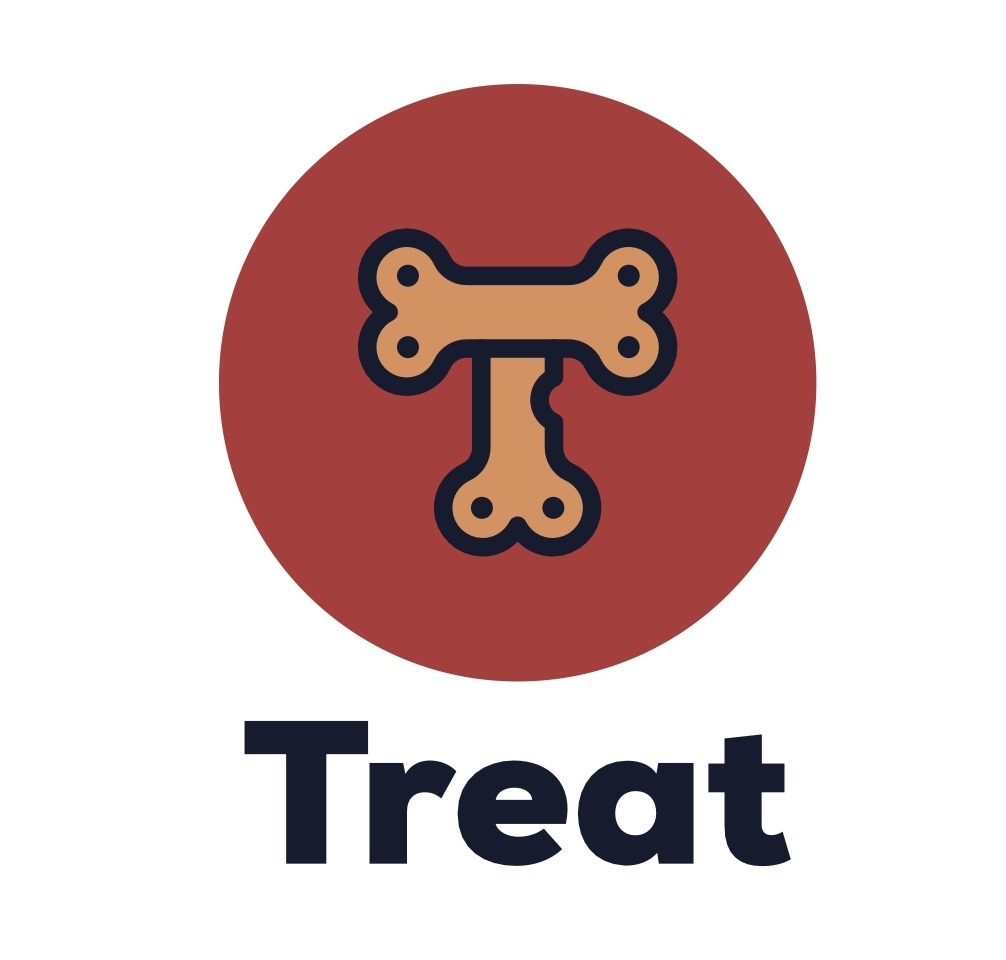
Prezzo di TreatTREAT
EUR
Listato
$0.001575EUR
+0.32%1D
Il prezzo di Treat (TREAT) in è $0.001575 EUR alle 18:27 (UTC) di oggi.
Convertitore da TREAT a EUR
TREAT
EUR
1 TREAT = 0.001575 EUR. Il prezzo di conversione attuale da 1 Treat (TREAT) a EUR è 0.001575. Il tasso è solo di riferimento. Appena aggiornato.
Bitget offre le commissioni di transazione più basse tra tutte le principali piattaforme di trading. Più alto è il tuo livello VIP, più i tassi sono vantaggiosi.
Grafico dei prezzi di Treat (EUR/TREAT)
Ultimo aggiornamento il 2025-07-04 18:27:48(UTC+0)
Prezzo live di Treat in EUR di oggi
Il prezzo di Treat in tempo reale è di $0.001575 EUR oggi, con una capitalizzazione di mercato attuale di --. Il prezzo di Treat è salito di 0.32% nelle ultime 24 ore e il volume di trading nelle 24 ore è $0.00. Il tasso di conversione TREAT/EUR (da Treat a EUR) viene aggiornato in tempo reale.
Quanto vale 1 Treat in ?
Al momento, il prezzo di Treat (TREAT) in è $0.001575 EUR. Puoi acquistare 1 TREAT per $0.001575, o 6,349.21 TREAT per $10 adesso. Nelle ultime 24 ore il prezzo più alto di TREAT in EUR è stato $0.001615 EUR, e il prezzo più basso di TREAT in EUR è stato $0.001552 EUR.
Pensi che il prezzo di Treat aumenterà o calerà oggi?
Voti totali:
Aumenterà
0
Calerà
0
I dati di voto vengono aggiornati ogni 24 ore. Essi riflettono le previsioni della community sull'andamento dei prezzi di Treat e non devono essere interpretati come consigli di investimento.
Info sul mercato di Treat
Performance del prezzo (24H)
24H
Minimo di 24H: $0Massimo di 24H: $0
Massimo storico:
$0.1560
Variazione di prezzo (24H):
+0.32%
Variazione di prezzo (7G):
-12.25%
Variazione di prezzo (1A):
+56.90%
Classifica del mercato:
--
Market cap:
--
Market cap completamente diluito:
--
Volume (24h):
--
Offerta circolante:
-- TREAT
Offerta massima:
--
Rapporto di analisi IA su Treat
Punti salienti del mercato crypto di oggiVisualizza il rapporto
Storico prezzi di Treat (EUR)
Il prezzo di Treat è variato di un +56.90% nell’ultimo anno. Il prezzo più alto di TREAT in EUR nell’ultimo anno è stato $0.1560, mentre il prezzo più basso di TREAT in EUR nell’ultimo anno è stato $0.001000.
DataVariazione del prezzo (%) Prezzo più basso
Prezzo più basso Prezzo più alto
Prezzo più alto 
 Prezzo più basso
Prezzo più basso Prezzo più alto
Prezzo più alto 
24h+0.32%$0.001552$0.001615
7d-12.25%$0.001428$0.001837
30d-5.88%$0.001428$0.001835
90d-55.17%$0.001326$0.003810
1y+56.90%$0.001000$0.1560
Tutto il periodo+56.90%$0.001000(--, Oggi )$0.1560(--, Oggi )
Qual è il prezzo più alto di Treat?
Il prezzo massimo storico (ATH) di TREAT in EUR è stato di $0.1560, registrato in data . Rispetto all’ATH di TREAT, il prezzo attuale di TREAT è sceso di Treat.
Qual è il prezzo più basso di Treat?
Il prezzo minimo storico (ATL) di TREAT in EUR è stato di $0.001000, registrato in data . Rispetto all’ATL di TREAT, il prezzo attuale di TREAT è salito di Treat.
Previsione del prezzo di Treat
Quale sarà il prezzo di TREAT nel 2026?
In base al modello di previsione della performance storica del prezzo di TREAT, si prevede che il prezzo di TREAT raggiungerà quota $0.00 nel 2026.
Quale sarà il prezzo di TREAT nel 2031?
Nel 2031, il prezzo di TREAT dovrebbe aumentare del +18.00%. Entro la fine del 2031, si prevede che il prezzo di TREAT raggiunga quota $0.00, con un ROI cumulativo del -100.00%.
Promozioni popolari
Prezzi di Treat mondiali
Quanto vale Treat in altre valute? Ultimo aggiornamento: 2025-07-04 18:27:48(UTC+0)
TREAT a ARS
Argentine Peso
$1.9TREAT a CNYChinese Yuan
¥0.01TREAT a RUBRussian Ruble
₽0.12TREAT a USDUnited States Dollar
$0TREAT a EUREuro
€0TREAT a CADCanadian Dollar
C$0TREAT a PKRPakistani Rupee
₨0.45TREAT a SARSaudi Riyal
ر.س0.01TREAT a INRIndian Rupee
₹0.13TREAT a JPYJapanese Yen
¥0.23TREAT a GBPBritish Pound Sterling
£0TREAT a BRLBrazilian Real
R$0.01Come acquistare Treat(TREAT)

Crea il Tuo Conto Bitget Gratuito
Registrati su Bitget con il tuo indirizzo e-mail/numero di cellulare e crea una password forte per proteggere il tuo conto.

Verifica il Tuo Conto
Verifica la tua identità inserendo i tuoi dati personali e caricando un documento d'identità valido con foto.

Converti TREAT in EUR
Scegli tra le criptovalute da scambiare su Bitget.
Scopri di piùFAQ
Qual è il prezzo attuale di Treat?
Il prezzo in tempo reale di Treat è $0 per (TREAT/EUR), con una capitalizzazione di mercato attuale di -- EUR. Il valore di Treat è soggetto a frequenti fluttuazioni a causa dell’attività continua, 24 ore su 24 e 7 giorni su 7, del mercato crypto. Il prezzo attuale di Treat in tempo reale e i suoi dati storici sono disponibili su Bitget.
Qual è il volume di trading di 24 ore di Treat?
Nelle ultime 24 ore, il volume di trading di Treat è --.
Qual è il massimo storico di Treat?
Il massimo storico di Treat è $0.1560. Questo massimo storico è il prezzo più alto di Treat da quando è stato lanciato.
Posso acquistare Treat su Bitget?
Sì, Treat è attualmente disponibile sull’exchange centralizzato di Bitget. Per altre informazioni dettagliate, consulta la guida su Come acquistare treat .
Posso ottenere un guadagno costante investendo in Treat?
Ovviamente Bitget fornisce un piattaforma di trading strategico, con trading bot intelligenti per automatizzare le operazioni e ottenere dei profitti.
Dove posso acquistare Treat con la commissione più bassa?
Siamo entusiasti di annunciare che la piattaforma di trading strategico è ora disponibile sull’exchange di Bitget. Bitget offre delle commissioni di trading e una profondità tra le migliori del settore per garantire ai trader investimenti redditizi.
Prezzi delle criptovalute correlate
Prezzo di Solana (EUR)Prezzo di WINkLink (EUR)Prezzo di Litecoin (EUR)Prezzo di Bitcoin (EUR)Prezzo di Fartcoin (EUR)Prezzo di Pi (EUR)Prezzo di Toncoin (EUR)Prezzo di Bonk (EUR)Prezzo di Cardano (EUR)Prezzo di Pepe (EUR)Prezzo di Dogecoin (EUR)Prezzo di Shiba Inu (EUR)Prezzo di Terra (EUR)Prezzo di Smooth Love Potion (EUR)Prezzo di Kaspa (EUR)Prezzo di dogwifhat (EUR)Prezzo di Worldcoin (EUR)Prezzo di Ethereum (EUR)Prezzo di OFFICIAL TRUMP (EUR)Prezzo di XRP (EUR)
Dove posso acquistare Treat (TREAT)?
Sezione video: verifica rapida e accesso rapido al trading

Come completare la verifica dell’identità su Bitget e proteggersi dalle frodi
1. Accedi al tuo account Bitget.
2. Se sei nuovo/a su Bitget, guarda il nostro tutorial su come creare un account.
3. Passa sull’icona del tuo profilo, clicca su “Non verificato” e quindi su “Verifica”.
4. Scegli il Paese o il territorio di emissione del tuo documento d’identità e il tipo di documento e segui le istruzioni.
5. Seleziona “Verifica mobile” o “Verifica PC” in base alle tue preferenze.
6. Inserisci i tuoi dati, invia una copia del tuo documento d’identità e scatta un selfie.
7. Invia la tua richiesta ed è fatta: hai completato la verifica dell’identità!
Gli investimenti in criptovalute, incluso l’acquisto di Treat online tramite Bitget, sono soggetti a rischio di mercato. Bitget ti fornisce modalità facili e pratiche per acquistare Treat. Ci impegniamo al massimo per informare gli utenti sulle criptovalute presenti sull’exchange. Ad ogni modo, non siamo responsabili per le conseguenze che si potrebbero verificare a seguito dell’acquisto di Treat. Questa pagine e le informazioni presenti non rappresentano un consiglio a investire su una determinata criptovaluta.
Convertitore da TREAT a EUR
TREAT
EUR
1 TREAT = 0.001575 EUR. Il prezzo di conversione attuale da 1 Treat (TREAT) a EUR è 0.001575. Il tasso è solo di riferimento. Appena aggiornato.
Bitget offre le commissioni di transazione più basse tra tutte le principali piattaforme di trading. Più alto è il tuo livello VIP, più i tassi sono vantaggiosi.
Bitget Insights

Molecule
3h
Germany’s National Academy of Sciences just said it out loud: aging should be a medical target
Longevity science is no longer niche. The world is finally catching up
Because why wait to treat age-related diseases, when we can treat aging itself?
Full article:
TREAT-12.01%

priyanka🍦
8h
i literally treat ChatGPT like buzzfeed quizzes
TREAT-12.01%

Takens Theorem
11h
RT @typo_eth: @takenstheorem I’m very happy to treat myself to both of these, and thank you for collecting a study earlier — I look forward…
ETH-4.19%
TREAT-12.01%

funghibull
17h
RT @0xsmac: NEW POD - conversion equations with peach
it was a treat to catch-up & record with peach, who doesn't do the typical podcast t…
TREAT-12.01%
JafarTreasure
18h
AI-sector trio—Virtuals (VIRTUAL), Sahara AI (SAHARA), and Bittensor (TAO)—with fresh data, utility breakdowns, and market context:
🚀 AI-Crypto Spotlight: VIRTUAL, SAHARA & TAO
1. Virtuals Protocol (VIRTUAL)
Overview: A decentralized “AI agent” launchpad on Base (and Solana), enabling users to mint tokenized AI agents that trade, earn, and operate autonomously.
Momentum: Exploded ~23,000% in 2024, peaking around $3–5; recent consolidation to ~$1.30–2.50 following a +15% surge on Binance futures listing 📈.
Risks: On-chain activity remains low (~$7 k/day agent revenue); ~93% of tokens held by whales—liquidity risk present. Mixed Reddit sentiment illustrates the uncertain fundamentals.
Outlook: CoinCodex projects ~$3.9 by March; community-driven, but highly speculative—best suited for short-to-mid-term trades.
2. Sahara AI (SAHARA)
What is it? A decentralized, blockchain‑powered AI ecosystem (Ethereum, BNB Chain) enabling creators to develop, license, and monetize AI models.
Token utility: Used as gas, utility, payments for datasets, inference, compute access, plus staking and governance.
Fundraising & Support: Raised ~$43 M Series A—backed by Pantera, Binance Labs, Polychain, Samsung NEXT; partnerships with Microsoft, Amazon, Snap.
Market dynamics:
Price: Cycling around $0.082–0.085, ~46% down from ~$0.158 all‑time high (June 26).
Volume: High liquidity—$160 M+ in 24 h; top-5 exchange volume on Binance, MEXC, Upbit.
Growth thesis:
Strong token utility across dataset/model/compute markets.
Majority supply (64%) dedicated to community and ecosystem expansion.
Listed major exchanges since June 26—supported launch hype.
Outlook:
Price predictions range from $0.45–1.20 through end of 2025, citing $50 M+ funding, VC backing, and rising infrastructure adoption.
Concerns: ad‑hoc volatility and dependency on continued usage adoption.
🔑 Key Takeaway: SAHARA sits at the center of Web3 AI infrastructure—strong fundamentals, serious backing, yet current price reflects ongoing cooldown post–launch frenzy.
3. Bittensor (TAO)
Concept: A decentralized neural network rewarding participants for training and inference contributions—often dubbed “Bitcoin of AI.”
Institutional validation: Supported by Digital Currency Group/Grayscale (~$100 M in TAO holdings); seen as strategic infrastructure PD bet .
Catalysts: Upcoming token halving in 2025; launch of the Yuma AI accelerator; growing subnet adoption.
Risks: Previous $8 M security exploit; scaling decentralized AI versus centralized giants remains challenge.
🔑 Key Takeaway: TAO is core infrastructure—ideal for long-term holding with institutional trust and token scarcity mechanics.
📊 Comparative Snapshot
Coin Type Price Range 2025 Outlook Risk Profile
VIRTUAL High-beta agent play $1.3–2.5 Potential bounce on listing/activity; volatile High volatility, whale risk
SAHARA Infrastructure token $0.08–0.085 3×–10× upside if adoption grows; strong support Usage dependency, post-launch dip
TAO Core network play N/A Halving + tool rollout may boost value; institutional Security, model scaling
🧭 Bitget Strategy Recommendations
TAO – Build a foundational stake in core infrastructure; hold through halving and tech expansions.
SAHARA – Use current dip as an accumulation window; track adoption metrics (dataset listings, agent deployments); consider taking profits at key milestones.
VIRTUAL – Treat as tactical trade; use dips and event-driven surges for entry/exit; avoid overexposure.
✨ Final Take:
TAO = stable structural play with institutional backing.
SAHARA = utility-rich, backed by serious funding—entry point after cooling off.
VIRTUAL = speculative, volatile, event-driven—use cautiously.
Let me know if you want live price charts or orderbook snapshots for any of these on Bitget
CORE-4.16%
TREAT-12.01%
Trading
Earn
Prezzi delle monete listate di recente su Bitget








